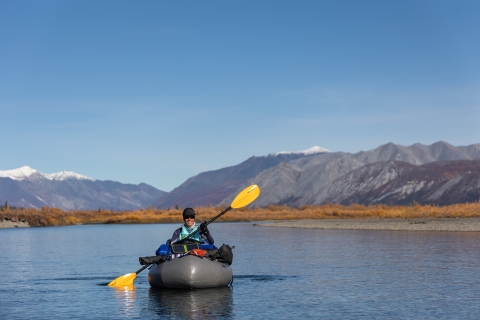Facility Activities
Many more people visit these lands than in the past. This vast and remote landscape is a place of great power, but it is easy to scar and slow to heal. As a visitor, your experiences will be intertwined with the wildlife and habitats the refuge is meant to preserve, and your practices will influence the future well-being of this place.
We all share responsibility to preserve this wild place—the responsibility to have a limited impact on the land and to protect the intricate web of life it supports—so that those in the future may be rewarded and inspired in their turn. Thank you for your efforts to limit your impacts when on Arctic Refuge. We hope your visit is an experience to remember! Explore the following activities for more information. If you prefer to be guided, see Tours.




